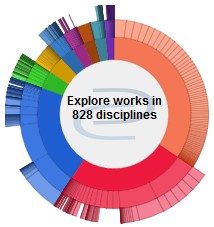-

An Empirical Investigation into the effect of Monetary Policy and Inflation on the Exchange rate in Ghana
Precious Wedaga Allor
The Ghanaian Cedi has recently experienced persistent depreciation against it's major trading partners. This paper investigates the role inflation and monetary policy plays in the persistent depreciation. The paper makes use of the ARDL and Bounds test of co-integration as well as the Toda & Yamamoto (1995) Augmented Granger Causality test to determine the long and short run dynamics of the impact of monetary policy and inflation on exchange rates in Ghana, using data ranging from 1970 to 2017. The paper finds short-run depreciation effect of contractionary monetary policy on the exchange rate, reflecting the exchange rate puzzle. The long run results however show an appreciating effect. Inflation is also found to depreciate the currency both in the short and long-run. The causality tests also reveal a bi-directional relationship between the exchange rate and the inflation rate, while a unidirectional causal relationship exists between monetary policy and the exchange rate. The paper recommends that inflation stabilization policies should be prioritized in Ghana, as a means to curb the rising exchange rates. Improvement in the terms of trade through export promotion should also be given the needed attention as this is found to appreciate the currency in the long-run.
-

Tattooing Among American Sailors and Maritime Communities from 1860 to 1945
Scott Boersma
It is the 1880s in Brighton, England, on the coast of the English Channel. A young boy depicts a scene of some of the men who work at sea. “Nearly all my sailor friends on the beach were tattooed. Of course, their tattoos were crude: just an anchor, a primitive attempt at a portrait of Lord Nelson or a declaration of ‘True Love’ made by some other Jack Tar ‘’teween the heaving decks of a sailing-ship’. But a few had fine tattoos, made by Japanese horis or Burmese craftsmen when their ships had docked at Rangoon or Akyab or Yokohama”.1 That young boy, George Burchett, would later practice the trade of tattooing, join the Royal Navy, and become a leading figure in England’s tattoo industry in the first half of the twentieth century. This example of tattooing within a British maritime community can help shed light on the practice among American sailors and maritime communities within the United States from 1860 to 1945.
-

Rhapsody in Blue: An Icon of Jazz and American Culture
Abigail Emmert
“Jazz, they said, has to be in strict time….I resolved, if possible, to kill that misconception with one sturdy blow.”1 Since its premiere, George Gershwin’s Rhapsody in Blue has remained a unique icon of jazz and American culture. His childhood and experience with piano and Tin Pan Alley in New York City led him to writing Rhapsody in Blue, which resulted in the emergence of a new composition style. His determination to create a new American sound out of his experiences and to create a new approach to jazz music brought much attention and even criticism to Rhapsody. Rhapsody is still relatable to and an icon for Americans and it represents an interesting and unique use of jazz for the concert stage. Still an American favorite today, Rhapsody in Blue is widely popular and often used for commercials and movies. Although Gershwin’s life was cut short at the age of thirty-eight by a brain tumor, he was nevertheless able to create Rhapsody in Blue, a unique jazz and American icon which has been popular ever since its premiere.
-

Stock Market Development and Economic Growth: Empirical Evidence from Nigeria
Obinna Franklin Ezeibekwe
Considerable debate exists on how stock exchanges affect economic growth. One line of research argues that stock market development is a positive and significant contributor to growth. On the other hand, other studies show that stock markets negatively affect growth or that they are not relevant contributors to economic growth. This paper seeks to identify the correlation between stock market development and long-run economic growth in Nigeria using the vector error correction modeling. Empirical results suggest that stock market development, as proxied by market capitalization to GDP ratio, does not contribute significantly to long-run economic growth in Nigeria. The implication of this findings is that the Nigerian economy has not gotten to the stage where the stock market can play critical economic development roles. However, efforts must be made to utilize the revenue from crude oil exports for investment in education, health, and capital goods to boost the country’s ailing manufacturing sector for sustainable development and set up robust institutions necessary for financial markets to flourish.
JEL Classification: G23, O16
Discipline: Financial Economics
-

Southern Sympathies in Illinois as Expressed Through "Nelson versus The People"
Katherine Gosnell
During the antebellum period, Illinois proved to be problematic for the North. Geographically, it is a Northern State. Population wise, it was split between Northern and Southern tradition. Around the Chicago area, abolitionism had a strong pull as expressed by the various colored conventions held there, as well as the variety of Whig/Republican newspapers. From the state capital of Springfield and further south, many people held Democratic view points and could sympathize with their Southern neighbors. As Illinois had slave states on two sides, it is easy to understand how these neighbors had an impact on Illinoisan culture and politics. Illinois was not the only Northern state to enact Black Laws, but theirs were certainly among the harshest. While enforcement of these laws was sporadic, most of the cases of violations were found in the Southern part of the state. One of the laws that proved to be among the most scandalous was the Black Exclusion Law of 1853. This law prohibited any blacks from coming into the state with the intention of living there. Punishment proved to be especially harsh in that it found a way to make slavery legal in the eyes of the law. While Chicago may have supported abolitionism, much of the rest of the state pushed for legislation to keep blacks out. The traditional Southern opinion of the lower status of blacks is engrained into the very fiber of this Northern state. The Illinois Supreme Court case, Nelson versus The People, is littered with southern sympathies as it all started with a violation of the Black Exclusion Law of 1853 in Hancock County. Through exploration of how this law came into being, and the intricacies of the case, it can be better understood how Southern ideas and culture were very much involved in the political opinions of the state until the Exclusion Law was repealed in 1865.
-

Revisiting the Women Factor in China’s Economy, 1918-1931 (Cotton, Sex, and Silk Industry)
Godwin Gyimah
The first five decades of the twentieth century mark an era where China experienced an industrial revolution. Globalization of capitalism brought major changes in the Chinese economy.1 Whereas China was initially characterized as a region that produced goods mostly to be used by its citizens, now the system changed and had numerous products being sent overseas to neighboring regions. In 1919, Chinese export products increased vehemently from a value of 486 in 1918 to 631 in 1919.2 The production of goods and other services were now at the large-scale level making most sectors in China grow as an industry.3 The devasted First World War had destructed imports and exports activities among various regions. Europeans in their bid to rebuild their political, economic, and social institutions focused on domestic affairs.
-

Interview with Obinna Franklin Ezeibekwe
Beth Heldebrandt
Obinna Franklin Ezeibekwe discusses his research project.
-

Public Health and Personal Choice: The Ethics of Vaccine Mandates and Parental Refusal in the United States
Rebecca Horan and Jonelle DePetro
In January 2019 The World Health Organization (WHO) released its list Ten threats to global health in 2019. For the first time ever, vaccine hesitancy, “the reluctance or refusal to vaccinate despite the availability of vaccine services” is officially on the list.1 Although great progress has been made in reducing or eradicating various diseases such as polio, measles, and whooping cough (pertussis), the number of parents refusing vaccination for their children is growing rapidly in what is now often referred to as the “anti-vaccination movement” ( or “anti-vax movement”). This is causing a threat to public health as the lowered proportion of vaccine uptake within communities is triggering a reversal of the progress made by vaccination thus far through a weakening herd immunity, putting everyone at a greater risk of contracting and spreading infectious diseases.2 According to the Center for Disease Control and Prevention (CDC), so far in 2019 the United States has already faced three outbreaks of the measles, a disease previously considered eliminated in the United States, in New York City, New York state, and Washington state.3 Each outbreak was found in areas with particularly low vaccination rates.4
-

"Wild"
Jeonghyun Kim
The “wild”, 12 layers of screen printed art work on Stonehenge fine art paper, is started from the research with the Booth Library Source.
The research was about how Degas created marks as a painter and printmaker. Degas was using rough and bold marks when he painted but still kept delicate sense of creating various textures of the subjects such as hair, ballet skirt, skin and natural objects rather than too much focusing on reality within his works. Dancer Taking a Bow (The Star) (c. 1878) and Dancers in Pink (c. 1948) are good examples. However, when it comes to the drawings or printmaking, Degas was tend to use abstract marks or less complex shapes and suggest the subject in his artworks. Les Monotypes, 1948 and Effet d'automne dans la montagne (Autumn Effect) (c. 1890) are great examples. It is exquisite how he used rough, abstract while still viewers might tell what he is trying to show.
After research, mimicking his mark-making style and incorporating it were the first step to create unique work, specially, the lines that he used on his works. Dancer Onstage with a Bouquet (c. 1876) and Wheatfield and Green Hill (c. 1890-1892) were the sources that mostly used as reference at first step, considering about mark-making style for art work “wild”.
Each layers were separated by color first, and then, by textures. China markers, acrylic painting, brush, mylar film, rubylith, tracing paper, opaque pens and sand paper were used create marks and textures.
-

Impact of CEO Industry-Specific vs. General Managerial Experience on Firm Performance, Risk-taking Behavior and CEO Compensation
Junnatun Naym
This paper investigates the impact of CEO cross-industry and specific-industry experience on firm performance, risk-taking behavior, and CEO compensation. Using hand-collected data for a large cross-section of CEOs over 1992-2017, I find that CEOs with cross-industry experience are not likely to help improve firm performance, tend to invest less on capital and R&D expenditure, and are likely to receive pay premium. On the other hand, CEOs with more industry experience tend to lower firm performance and receive a discounted pay, especially among high growth firms, which can be attributed to their excess investment in R&D. This paper contributes to the literature that examines the impact of CEO characteristics on firm performance and other firm outcomes by documenting the effect of cross-industry and specific-industry experience on these outcome variables.
Printing is not supported at the primary Gallery Thumbnail page. Please first navigate to a specific Image before printing.









